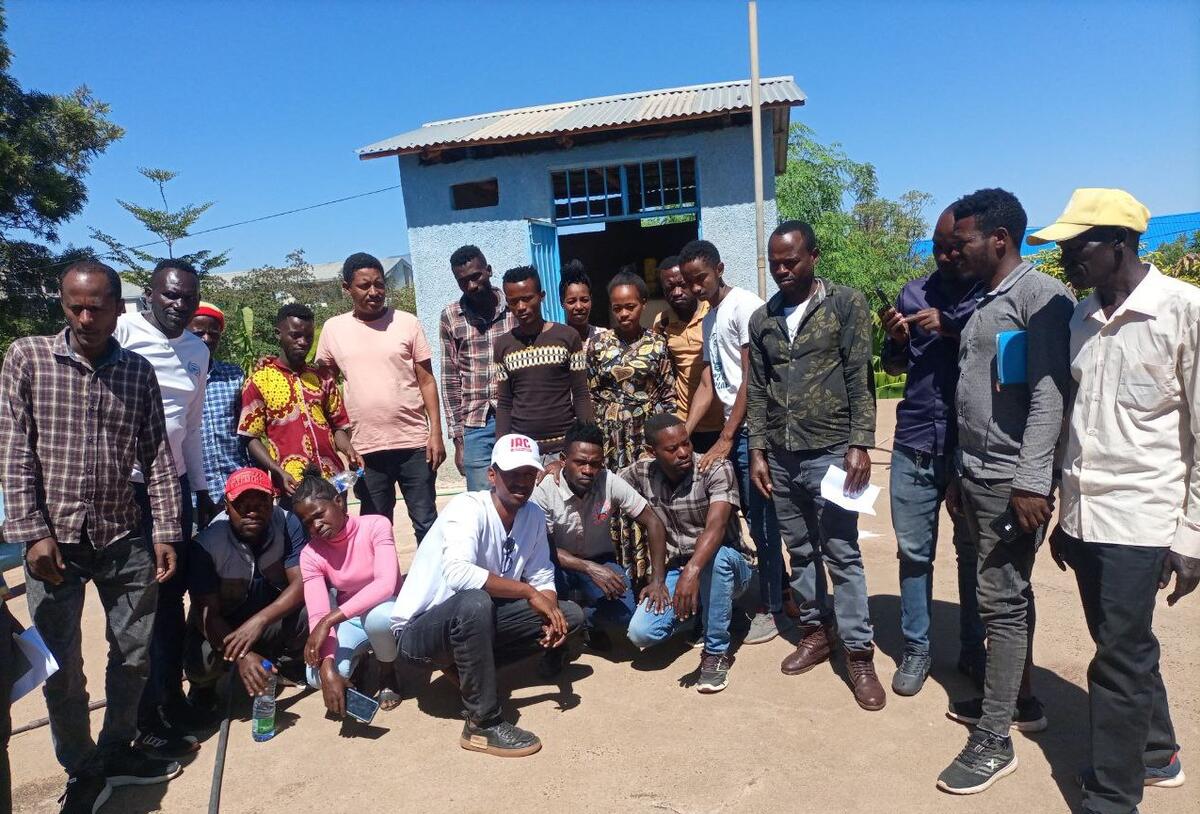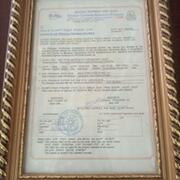Members of the South Ari Woreda water safety team visited Arba Minch Town Water Supply and Sewerage Enterprises and were greatly impressed by the high level of professionalism.
Published on: 06/04/2023

South Ari Woreda water safety plan team members
Challenges related to drinking-water supply in rural areas and small towns are of notable concern in Ethiopia. Improving the situation of small-scale water supply therefore has priority. The water safety plan (WSP) approach, recommended in the WHO’s Guidelines for Drinking-water Quality (3rd Edition, 2004) is an effective way of ensuring sustainable safe drinking water services, regardless of the size of the supply or the level of development of the setting.
South Ari Woreda (District) has been implementing a water safety plan (WSP) in four selected kebeles within two drainage catchments since August 2022. This is a new approach for the administrative zone (South Omo Zone). They began by using the Climate Resilient Rural WSP guidelines for their implementation, with technical assistance from the zone and other experts.
To help with this work, a learning exchange visit was organised, and 28 South Ari Woreda team members flew to Arba Minch Town to see the Town Water Supply and Sewerage Enterprises (ATWSSE) water safety plan and how it is being implemented.
Establishment
Prior to the current ATWSSE, it was set up like most of the country's water facilities and managed by rural water and sanitation associations and committees. It began serving less than 2000 clients from 40 spring sources and faced challenges such as being unable to meet water demand due to a lack of funds to expand the number of water sources, skilled manpower, and other restricting factors. When the city expanded and the population increased, the number of customers grew, and the water associations and committees were turned into a water utility.
Water resources and services were not generating money, were fragmented and ineffective and posed many problems. Therefore, they conducted risk assessments and identified gaps in the water safety plan.
In 2018, the Ministry of Water and Energy and WHO (using funding from the UK Department for International Development) began implementing the concept of a water safety plan by training 14 local utilities from five regions, including ATWSSE.
Risk Assessment
They formed a WSP assembling team with 21 staff from the Water Supply and Sewerage Enterprise and nine people from (external) partner organisations. The team began working on the present and future risk assessment, checking each component of the water system from source to user and proposing appropriate management strategies.
In addition to the risk assessment of the WASH facility, ATWSSE followed the Urban CR-WSP guideline procedures, which included developing a management strategy, supporting programmes, a WSP sustainability review and following up on events.
After assessing all risks posed on the WASH facilities and anticipating potential future hazards, the team developed viable control measures to protect the WASH facilities, systems, and services, and supplemented the guideline. They passed it on to the appropriate executing body/WASH actors via the Gamo Zonal Administration and the Arba Minch City Administration for implementation. A thorough water safety plan can be created based on city growth and expansion . That way it can forecast and address problems that could negatively affect a long-term, reliable water supply system, such as the increase in number of hotels and resorts and the proliferation of associations and organisations offering water services.
Coordination
Stakeholders like Arba Minch University, the city's health, environmental protection, hotel, and tourism offices began cooperating for a sustainable water supply using the water safety plan. As a result, these groups get together every three months to assess the water safety plan's implementation.
The team had been conducting a poll on the city's water supply, to understand what the residents need and how to best meet those needs. The water safety plan thoroughly identified the water shortages. The right control measures, such as additional water sources (deep wells), clustering of water distribution systems using buster stations to control the distribution system, expansion work on spring sources using additional pumps, and electromechanical equipment (on standby), were used to solve the problems with the chlorination and water treatment plant. The team planned the essential technical capacity building on the job without the help of schools and institutions to address the issue of maintenance response time.
Overcoming challenges
The main gaps in the status of water quality and service levels were the inability to complete the construction of the enterprise laboratory, a lack of expertise, inadequacy of chemical and test kits, inability to estimate the correct amount for water treatment, the amount of powdered chlorine added directly to the tanker, the residual chlorine remaining in the water, and the security of water facilities. After investigating the gaps, the firm began adopting preventive measures for all identified threats. Subsequently, by expanding the water sampling laboratory, creating a new separate room for all water quality testing, hiring two more experts, using scientific measures to balance the water treatment, using liquid chlorine treatment, hiring the necessary security and having on-site electromechanical technicians on standby, they began to provide a 24/7 service. All ATWSSE water safety plan implementation activities and prepared control measurements were evaluated and validated in 2019 by an external WSP auditing team (a consultant and national and regional water and health sector experts) and passed all the criteria.
The water safety plan also looked at potential future hazards and gaps in tariff and revenue collection; as a result, various revenue collecting strategies were implemented. With a total of more than 15,000 customers, the company expanded revenue collection shops integrated directly into the banking system by opening two additional district branches. Also, the company is constructing a three story building on its site.
Achievement
ATWSSE's water safety planning and implementation were examined at the federal level and received first place out of 14 water utilities. It also received ISO certification. The Ethiopian Conformity Assessment Enterprise also awarded the firm Standard Mark Usage certificates.
This demonstrates the significance of good water safety planning and implementation. It is possible to construct a sustainable water service, if a water safety strategy is appropriately developed and implemented. Institutional sustainability can be guaranteed by developing a water safety plan.
Visitors' takeaways
The visiting team was astounded by what they witnessed. ''What? Is this a utility or a large corporation? Wow! This store is so large, and they have all spare parts on hand to handle extensive maintenance? What kind of well-organised office set-up is this?", said Tigist Manyalew, Gazer Utility team member.
"All the water systems we visited and the WSP implementation seem to be amazing, we need to take this learning to our kebele; they achieved the WSP because they are committed to conduct it, we have to wake up and make efforts to change the service in our community, I like to take this experience to my kebele," Amare Alsa, Sida Kebele said.
"Beyond the commitments of WASH actors, the skills and commitment of government leaders are the basis for WASH systems strengthening and sustainability. There has been low turnover of staff, the same ATWSSE manager has remained in office for the last six years, and all staff have made their own contribution, those are the main reasons for this achievement," said Tigistu Dejene, South Ari Woreda Water Office Scheme Administration Team Leader and WSP Director.
At IRC we have strong opinions and we value honest and frank discussion, so you won't be surprised to hear that not all the opinions on this site represent our official policy.